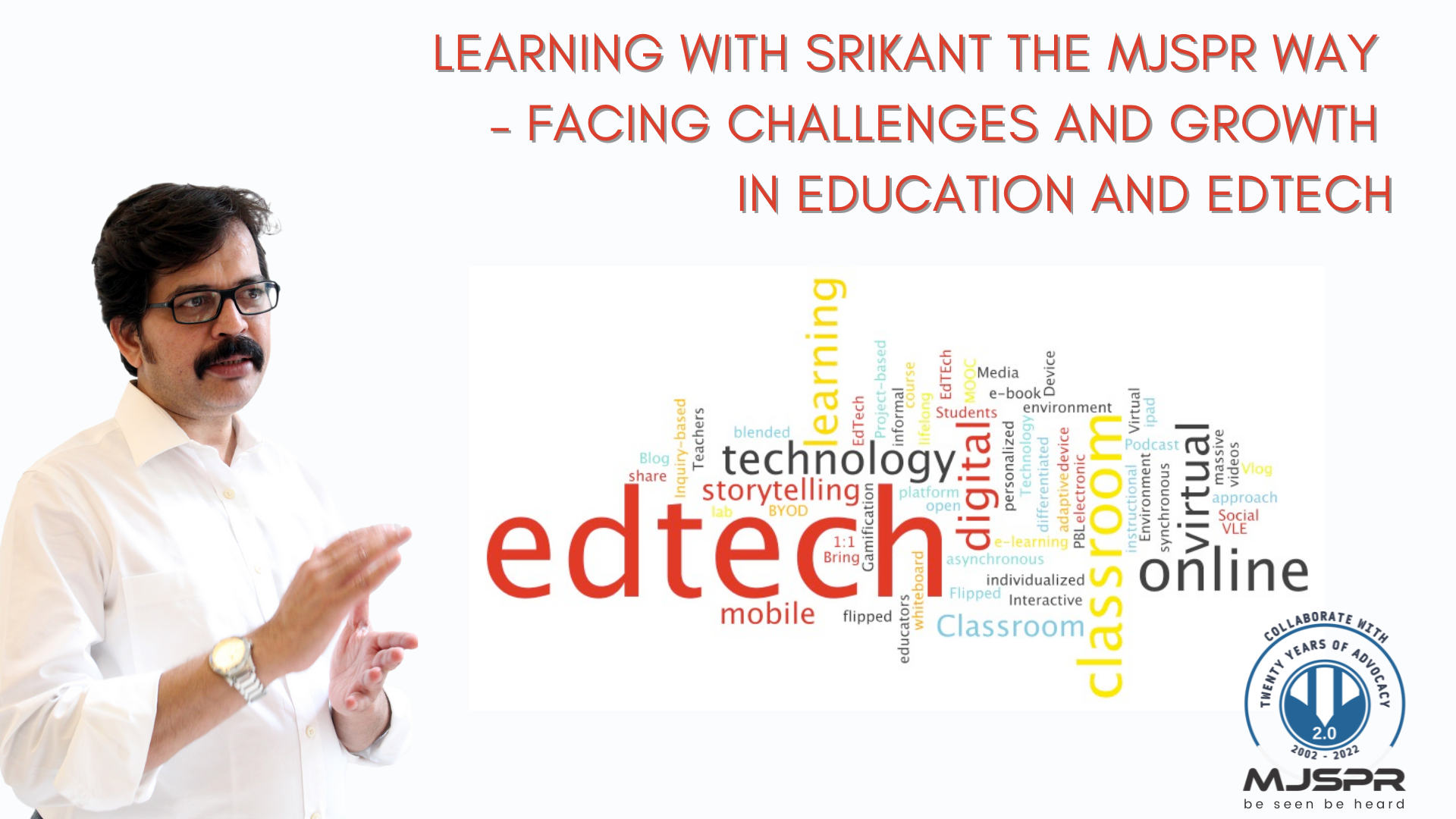Education and Education technology (edtech) together make up a crowded market. The massive sector is witnessing challenges as well as rapid growth. The global edtech market is nearly $100 billion and of this India’s edtech sector is worth almost $4 billion. The edtech sector is likely to see a compound annual growth rate of nearly 20% for the next 5 years.
“The challenges faced by the legacy education sector stem from the New Education Policy and changing aspirations of students as well as their parents. Edtech companies are growing on the back of demand and aspirations,” says Strategic communications and brand expert MJ Srikant.
With over 20 years of experience and innovative communication strategy, Srikant talks about the road ahead for the education sector, especially the new normal.
“The pandemic did not present any alternatives but to innovate. The demand for edtech solutions triggered an extraordinary pace of growth and the education sector has taken a leap of a decade in a short span of time,” said Srikant.
This fast tracking of edtech and tepid response of legacy institutions has resulted in a crisis of communications, feels Srikant. Edtech companies face a regulatory regime because of their unbridled growth while the educational institutions stare at the challenges of NEP adoption.
Most of the edtech companies took birth during Covid churning. The period was a narrow band experiment and in the new normal that kind of a product may not thrive as it did during the pandemic. “An unbiased market feedback with correct communication strategy is required to finetune edtech products,” says Srikant.
Legacy institutions too must shed their reluctance for communication and PR. They must understand that adoption to the new normal of blended learning and fine tuning of the admission process are tagged to strategic communication.
“All the players in the education sector have to necessarily work on strategic communication and branding with relation to their USP, anticipation of customer’s purchase process, constant feedback from the market, product life cycle and tech for human factor,” emphasised Srikant.
Srikant stressed on the fact of implementing smart communication on multiple channels, data utilisation and building customer trust. This is cost effective and dynamic in market approach, which is in sync with the new normal.






